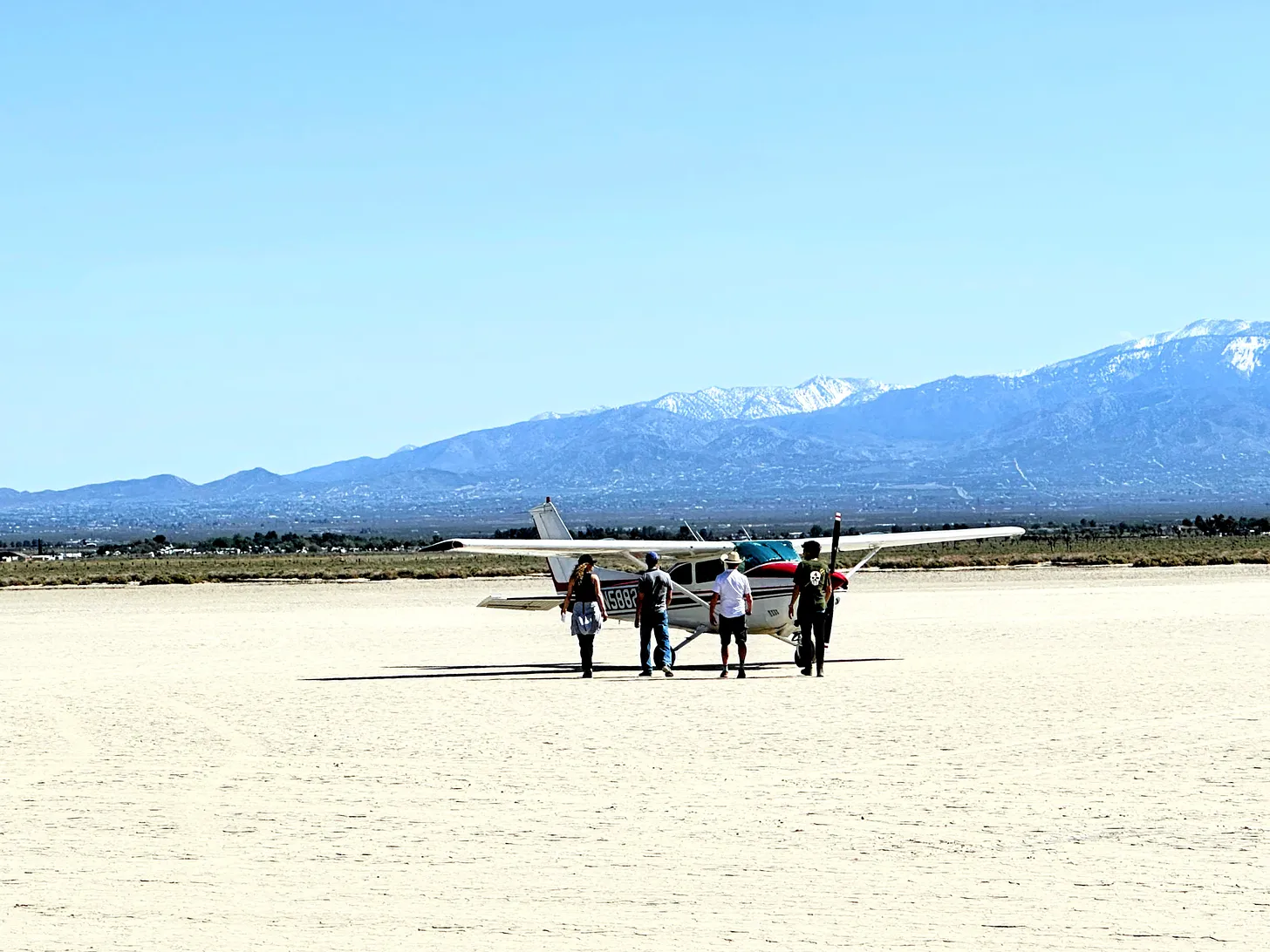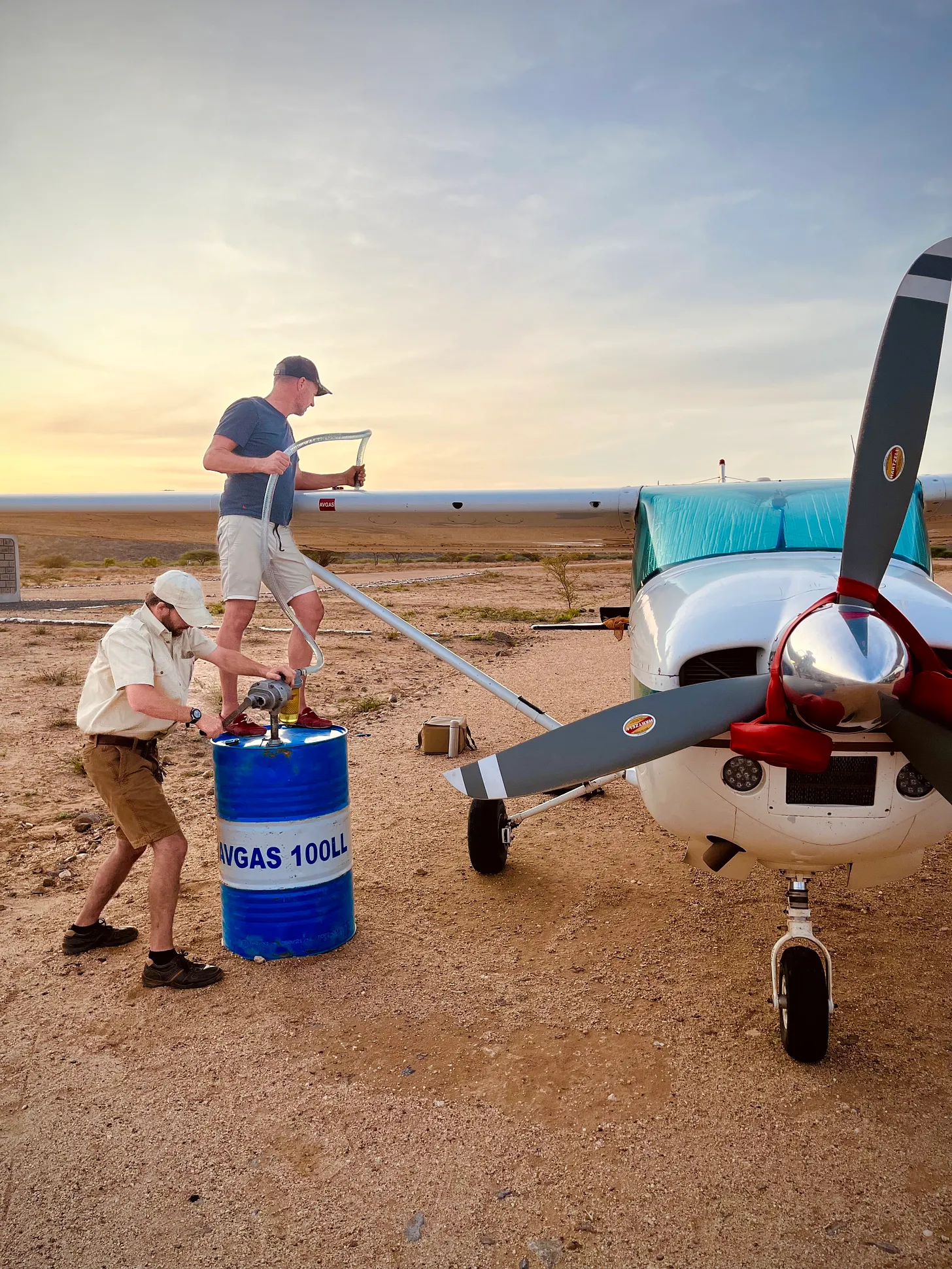|
Getting your Trinity Audio player ready...
|
A Missile Test in the Mojave by a 20-year-old Poses the Question: How Safe is Safe Enough?

Society will always tell us there’s no such thing as safe enough. We will add more and more sensors, cameras and lidar to things that drive themselves, while news headlines rage of man failing machine, machine failing man. We put in airbags and then a switch to deactivate them.
At 12,500 feet, having just crossed the Sierra’s in a small plane with my dad, today I’m thinking about how poorly equipped the human mind is at understanding real versus perceived threat.
My airplane insurance policy has a very specific number for this: $1850 per year. That’s what it costs to insure a 200mph piece of aluminum with 90 gallons of high octane fuel. With little more than a hobbyist’s credentials, I can fly a half million dollar plane for about as much as it costs you to ensure your car. Yet, without data, small planes elicit the same emotions as swimming with sharks we never see.
On this day Dad and I are headed to the Mojave Desert, a former sea, with the intention of landing our little red-and-white high wing Cessna on a dry lakebed about an hour and half east by car of Los Angeles. Retired and always up for a hamburger, Dad accepts my invitation for a father-son day of flying, starting with lunch at Harris Ranch.
Dad is a former smuggler, briefly turned arms dealer. He has little patience for process and none for safety. Looking out the window as the tops of ski lifts pass off our right, Dad gets reflective:
“Bureaucrats will always ratchet up more bureaucracy. They know only to pile rules upon more rules. It’s a one-way game.”
Clear of the Mammoth ridge, we dump our speed and start a stupefying descent into China Lake Weapons Range. Our destination, just outside its restricted airspace, is El Mirage dry lakebed.

Today’s test is the manifested dream of Ethan Thorton, a 20-year-old MIT dropout. Texas-bred and well-read in foreign diplomacy, Ethan is a football playing nerd with a savant’s recall of wartime manufacturing statistics. In his final months in Cambridge he nearly blew up a bridge over The Charles River trying to reinvent gunpowder.
Ethan’s vision is hundreds — soon thousands — of small things carrying 20–30 pound payloads intended to form a cheap sky shield over places like Ukraine, and unfortunately probably soon, Israel and Taiwan. Viper is his first weaponized 3D-printed drone, an unmanned missile with wings that looks like the SR-71 Blackbird — the fastest and highest flying plane in the world.
Viper could fit in the back of a Prius. But it could also be strapped to a backpack and land inside enemy lines. When launched it howls like a baby mountain lion shot out of a gun barrel lined with hydrogen. If China is producing three hundred boats for every one of ours (yes 300:1), Ethan is imagining a future when domestic manufacturing enables America to win the numbers game with autonomous weaponry, just as it did with B-17s and Liberty ships in decades past.
“What keeps me up at night?” he asks when I ask why a ranching kid from Texas who wanted to study neurobiology at MIT would drop out.
“China.”
—
The Mojave is not an inland sea so much as it is an archipelago of dry lake beds that emerge like islands out of an ocean of sagebrush, flowering yucca and rock formations resembling vertical coral reefs. There are airstrips everywhere, and many things that are just hard to identify. More of our country looks like this than you might think. My daily commute in the northern end of our State takes me over Stanford’s mile-long linear accelerator, and just beyond that, a wind tunnel resembling a Victorian phonograph built to the scale of NASA’s Moffett field, the largest hangar in the world. Yet these are more inholdings than they are islands, all built when our government could stomach large projects without worrying about frogs.
The boundaries of ecosystems are where the most diversity of animals and plants exist in nature. The boundaries of disciplines are where innovation and systems integration happen. What about the boundaries of cultures? Orange County is an island of red surrounded by blue. Redwood City is an island of red surrounded by blue
Both are vibrant and building again. I know. I took my dad to see them.

The location of today’s test is important. Technically it sits under what is called “Class G” airspace, which starts at ground surface and goes to 12,500 feet. This is the most unrestricted airspace in our country and often comes with an “anything goes” mindset. Every major defense contractor, as well as most Western-states rocket clubs and even land-based speed junkies, gravitate towards it. Popularized by network news coverage of Burning Man, it is actually the preferred surface of land speed records, atomic bombs, and aeronautical fortune seekers.
Several of the unmarked airstrips have Predator-sized drones visible under large shade structures, men scurrying with carts. Even flying over in a commercial jetliner affords a patchwork view of bombing ranges and dome-like structures with roofs that appear to open like clamshells. It’s an hour outside LA and yet nobody seems to know about it.
I invite a fellow pilot with a much faster plane to also make the test, even if he has to use one of the nearby paved airstrips. He quickly texts back: “Unless you want to be locked in a broom closet with a German shepherd of ill repute, don’t land at any of those airstrips.”
—
Our destination of El Mirage, however, is fair game. As it comes into view Dad ruminates further: “How safe is safe enough is an unanswerable question. No bureaucrat will ever ask that”.
We circle the test site and pass low for a look at the lakebed surface.
“Smoother than back home” Dad mumbles, queuing the mic.
Craig, the test site coordinator and also a pilot, comes up on the radio to vector us in, together with another small plane, from the south. We roll up behind a line of trucks and shut down.
—
At the end of the Cold War our country had 23,000 defense contractors, but one late fall night in 1993, Les Aspin, Secretary of Defense under Bill Clinton, summoned the heads of the largest fifteen to The Pentagon.
“None of us know why we are here,” a CEO is remembered saying.
“In a few minutes you’ll know why,” Secretary Aspin says somberly, “and you aren’t going to like it”.
That night marks the peacetime payout of the Soviet collapse, and the near forced consolidation of a defense industry built on two world wars. We will go from a country known for having a lathe and a machine shop on nearly every neighborhood block to just a handful of dominant defense “primes”. The Pentagon says it isn’t in the business of picking winners but its message is clear. Consolidate or die. And by this decree, intended or not, so too does competition. The next two generations will build inefficient things at enormous costs through programs pre-won in a room not unlike the one Secretary Aspin summoned his captains of industry.
A dinner now remembered as “The Last Supper”.
—
Mach’s test crew sets out orange cones marking the active range. An orderly line of trucks, trailers and shade structures mark midfield. Tripods of equipment run the full length and engineers holding radios move about on bicycles. As organized as it is, it appears more Red Dawn than Top Gun: a ragtag group of teenage-looking boys who hired veteran test pilots to bring structure to chaos. Hot, dusty and powered by small generators it is in stark contrast to General Atomics’ private base a half mile away.
“Today is a test not just of machine but also of our team,” Ethan says. The entire company is onsite, including the CFO as well as a few candidates I am hoping to recruit to Mach. “It’s important for everyone to experience a first test,” Ethan goes on. “Everyone has their job. No drama.”
Spectators are directed outside the marked test area and Ethan keeps us updated via a shared text thread.
“Firing in five minutes.”
—
Dad and I are now crouched behind a row of pick-up trucks. We laugh that sheetmetal offers little protection for what is essentially a test of a land-based missile on a rope. Should there be a vertical stabilizer failure and it veer off-course, that turbine will do to a truck what it is designed to do to a tank in Western Ukraine.
“Do you know what a juicer does to a grapefruit?” Dad looks at me laughing.
“It pulverizes it”.
—
In the coming years our defense budget will reach one trillion dollars. China’s 100 year plan is a public document and offers a clear vision for this:
“We have been planning on this and we will fight in the gray”.
Many, like Ethan, believe we are probably already at war. In 2015 the systems of several water treatment plants, along with dozens of similar infrastructure hacks in finance, manufacturing and transportation, were compromised and then suddenly went quiet. We don’t know who it was or what they learned, but it was also almost certainly a test, and most likely a test conducted by the Chinese. Youtube videos today show factories of surface-to-air missiles in China that have no humans with a daily capacity in the thousands. The terrifying thing is that China might not even need them. If they turn the water off, or double the chlorine in our water supply, who needs a weapon? War may look very different from even a 3D printer, let alone a 1950’s lathe.
Worrying about safety might be like worrying about oat milk, my father comments. “If there isn’t any, we might get less picky.”
—
Breaking stuff makes us learn. World War II had horrendous reliability rates. The joke went that if a plane came back, whatever metal had bullet holes and was still flying meant it was metal that could be flown without, and was thus engineered out.
What does it take to make a breakthrough? Whether it is Vasco de Gama or the beginnings our our aerospace industry, breakthroughs happen because visionaries are moving fast and testing things despite meaningful risk to life and limb. Elon Musk is launching Starships knowing the initial ones will likely fail to fully succeed, but that the learnings derived from imperfection are far more valuable to the overall goal than interminable waiting as a design is polished in the absence of real world data.
Unfortunately for Elon, some of us think that the benefits of rapid iteration should be delayed to investigate the impact on local frogs. Investigating the killing of frogs encapsulates the problem. We have a guy that is an American hero and we are giving him shit about species protection when our very own is getting cooked.
Flying over the desert offers a different view. It’s 40 miles outside a metropolis. It’s not in the middle of nowhere. There’s a lot of stuff going on down here. Why? Because there’s a tribe of people that believe the country’s going to call on them.

I’m a card carrying Sierra Club Member. But today, I prefer rockets over frogs.
The Optimist, American recognizes that innovators need space to answer the question of how safe is safe enough.
Society will say it’s never safe enough, this approach is a known killer of innovation.
But a 20-year-old left MIT and gave up medicine. He built Viper. It ran. Next time it might fly.
- The Arrogant Pilot - February 14, 2025
- Freedom to the Form - November 6, 2024
- Burning Man for Builders - July 10, 2024




That was…different…
We waste more money than virtually anyone else on Earth because we have so much of it.
But we are also one of the most short-sighted nations on Earth.
We want comfort, we want all the services of government, but refuse to pay our fair share to fund it.
One of the most short-sighted aspects of our lives is our failure to recognize the incredible importance of EDUCATION of our current crop of kids to ensure a better future not only for them, but for ALL of us.
One big reason why China is outstripping us is really pretty simple : China is willing to pay upfront for a well-educated citizenry and, thus, for a well funded FUTURE.
While our politicians have hemorrhoids over helping American kids afford college educations, and refuse to even think of such a thing as FREE UNIVERSAL EDUCATION, China graduates nearly 800 times as many engineers every year as we do. Nearly 800 times as many chemists, physicists, and the list goes on and on and on.
But we’re insane enough to want to return a psychopath to our highest office.
And China and Russia and a bunch of other pretty ugly places are laughing their fools heads off.
Ah well . . . . . who cares?
Was there a point or points to be made?
So China graduates exponentially more engineers than us, but they still have to steal our engineered products and technology. There’s plenty of examples of this in industry. The issue isn’t free education, it’s get the blasted social experiments out of education and start challenging and inspiring the kid’s academics and skills. Kids will become what parents expect of them from a very early age. (BTW science proves that 2 parent traditional family is BY FAR the best environment for kids). People important to our history were doing serious work as teenagers, today we expect 20year olds to be pampered entitled children who blame their parents for their behavior. Why did we not have stories of people like Jimmy Doolittle, Teddy Roosevelt, Bob Hoover presented to us as kids in our education? Instead we got boring dates and uninspiring monotone narratives. Author touches on hard truths a large segment of our political spectrum refuses to see. “An American who cares” keep politics and name calling out of this forum, it’s about aviation not Presidents or socialism. Turn off the news, go read about how Jimmy Doolittle, Bob Hoover became the men they were and what they contributed to the world and aviation, you’ll feel better.
Wow, it’s definitely enlightening to read this. People get so caught up in issues like global warming and save our frogs that we forget what’s really going on in this world.
And @An American who CARES- within the last couple years, with the college protests, it has been proven that colleges in the US teach our kids to hate our beautiful country, yet you want to provide that education for free!?!?